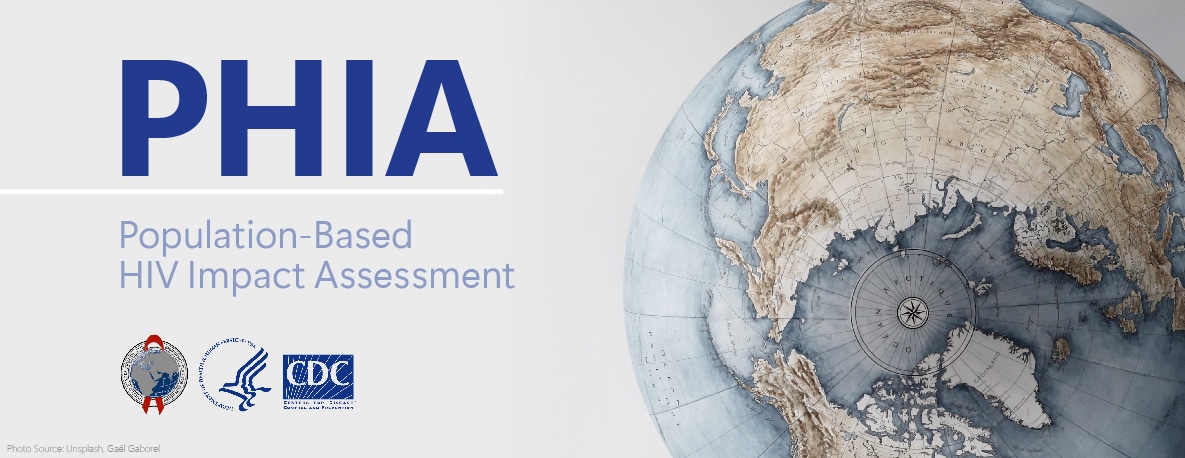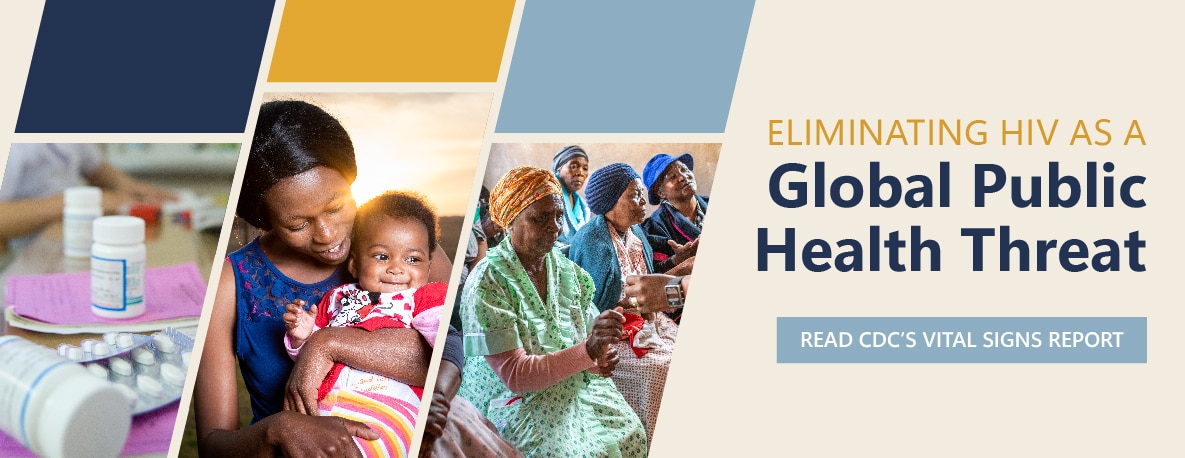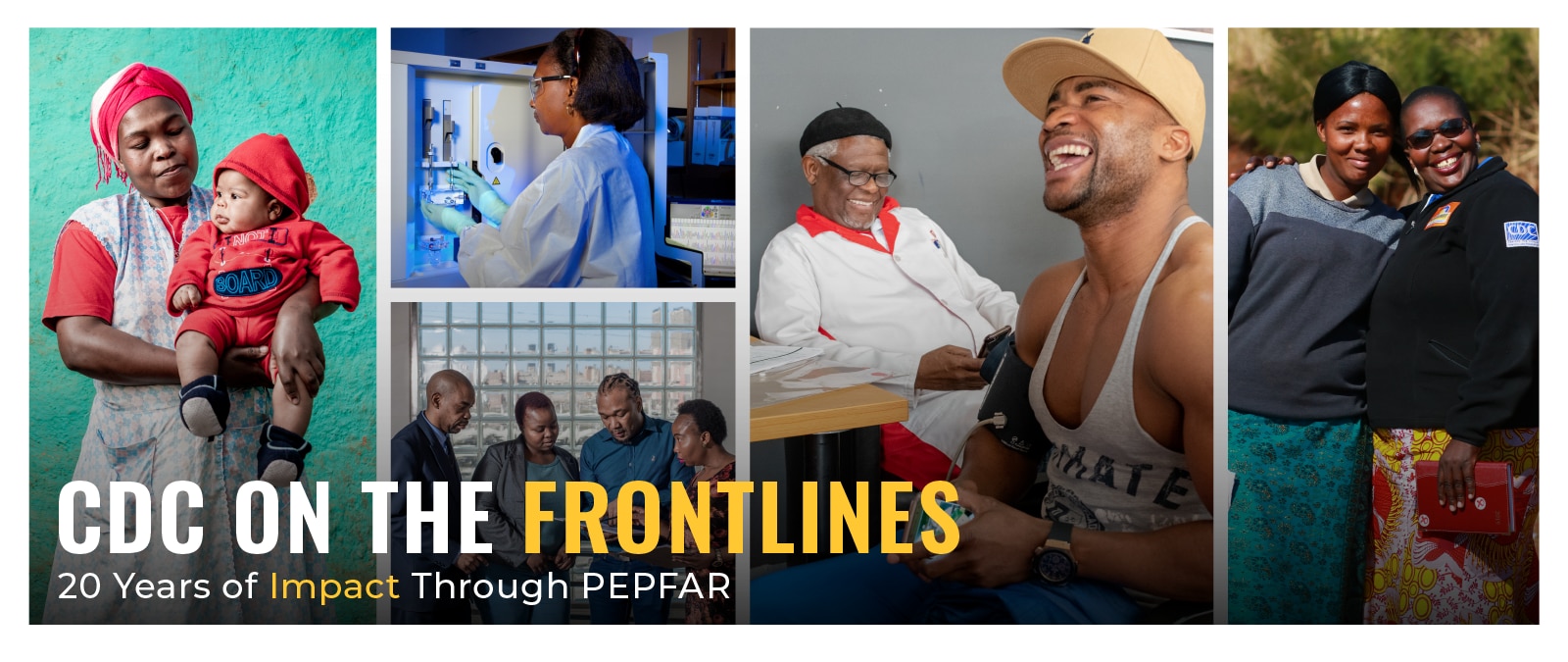Zimbabwe Country Profile

Zimbabwe Country Profile
Discover more about CDC’s work in Zimbabwe by viewing our detailed country profile
Country Overview
CDC’s office in Zimbabwe works closely with the country’s Ministry of Health and Child Care to strengthen and expand its response to the HIV epidemic. CDC’s partnership with the Ministry focuses on HIV prevention interventions such as voluntary medical male circumcision and prevention of mother-to-child transmission of HIV; HIV testing and counseling; and expansion of antiretroviral treatment services for people living with HIV. CDC also works to integrate HIV and tuberculosis (TB) services and TB infection control in health facilities. Additionally, CDC is aiding Zimbabwe in its efforts to enhance the nation’s laboratory systems (including viral load testing scale-up and HIV/TB diagnosis and monitoring), health information systems, and disease surveillance networks.
Per Capita GNI
$1,500
(2022)
Population (million)
16.32
(2022)
Under 5 Mortality
49.5/1,000 Live Births
(2021)
Life Expectancy
59.3 Years
(2021)
Estimated HIV Prevalence
11%
(Ages 15-49): (2022)
Estimated AIDS Deaths
18,000
(Age≥15) (2022)
TB Treatment Success Rate
88%
(2020)
Estimated TB Incidence
190/100,000
(2021)
Estimated Orphans Due to AIDS
490,000
(2022)
TB patients with known HIV-status who are HIV-positive
50%
(2021)
Reported Number Receiving Antiretroviral Therapy (ART)
1,182,126
(Age≥15) (2022)
Strategic Focus
The Centers for Disease Control and Prevention (CDC) works closely with Zimbabwe’s Ministry of Health and Child Care (MOHCC) to further expand the robust national HIV response. CDC has implemented programs to build capacity and technical expertise, and enhance the Zimbabwe infrastructure necessary for a sustainable, high impact HIV response.
Current areas of strategic focus include:
- HIV prevention, testing, and treatment
- Integration of HIV and tuberculosis (TB) management, and TB infection control
- Laboratory support for HIV and TB diagnosis and monitoring
- Health systems strengthening, surveillance, quality improvement, and health information systems
Key Activities and Accomplishments
HIV Treatment Program
• Collaborative efforts between CDC and MOHCC have put over 1.1 million Zimbabweans on antiretroviral treatment (ART), translating to approximately 80% coverage of PLHIV across the country. This is largely the result of technical, direct human resource support, and strong coordination among stakeholders.
Voluntary Medical Male Circumcision (VMMC)
• VMMC is the cornerstone of biomedical HIV prevention in Zimbabwe; an estimated one new HIV infection is averted with every 8 male circumcisions. In FY 2017, CDC supported over 100,000 circumcisions.
Surveys, Surveillance and Program Information
• The first report of the Zimbabwe Population-Based HIV Impact Assessment (ZIMPHIA), provided the first national level HIV incidence of 0.47% among adults 15-64 years: 0.33% among males and 0.60% among females. This corresponds to approximately 33,000 new cases of HIV annually among persons aged 15 to 64 in Zimbabwe. HIV prevalence among adults aged 15 to 64 in Zimbabwe is 14.1%: 12.0% among males and 16.0% among females. This corresponds to approximately 1.2 million persons aged 15 to 64 living with HIV in Zimbabwe. (ZIMPHIA 2016)
• The country completed round two of the preventing mother to child transmission (PMTCT) Effectiveness Survey (2016-2017). The survey showed increase in ART uptake in the preconception and pregnancy phases in adult women. Population 81.2% at six weeks and 85.2%, at 12 months postpartum.
• A national tablet-based electronic health record (EHR) system has been piloted by CDC, endorsed by the MOHCC at the end of 2016. The MOHCC has proactively supported decentralization of patients so the system will support de-duplication of data. The system is being implemented in the capital, Harare, with plans for nationwide rollout subject to funding availability.
TB support
• Recognizing the high risk of TB infection and transmission in health facilities, CDC is partnering with MOHCC to develop and implement a national policy for annual TB screening for all health care workers across Zimbabwe.
Laboratory Support
• MOHCC National Program Data shows the availability of viral load testing for PLHIV on ART increased from 5% in December 2015 to nearly 40% in 2017, after CDC placed 6 new platforms in labs across the country. Capacity building continues through proficiency testing and strong quality management

Tracking PEPFAR Impact Toward Global Targets
The U.S. Centers for Disease Control and Prevention (CDC) works with partners including host countries, local implementing partners, faith-based organizations, and other community-based organizations to measure progress towards HIV epidemic control in countries supported by the U.S. President’s Emergency Plan for AIDS Relief (PEPFAR).

Vital Signs: Global HIV Communications Toolkit
In 2003, the U.S. President’s Emergency Plan for AIDS Relief, or PEPFAR, was announced. When it was launched, PEPFAR became the largest commitment by any nation to address a single disease in history. At the time, HIV was a global crisis, devastating families, communities, and economies worldwide—particularly in sub-Saharan African countries.

CDC On the Frontlines
Over the past 20 years, the U.S. President’s Emergency Plan for AIDS Relief (PEPFAR) has saved millions of lives as a leader in the global response to two of the world’s deadliest infectious diseases – HIV and TB. As a key implementing agency of the U.S. President’s Emergency Plan for AIDS Relief (PEPFAR), CDC is at the forefront of these global efforts to treat and prevent these diseases.